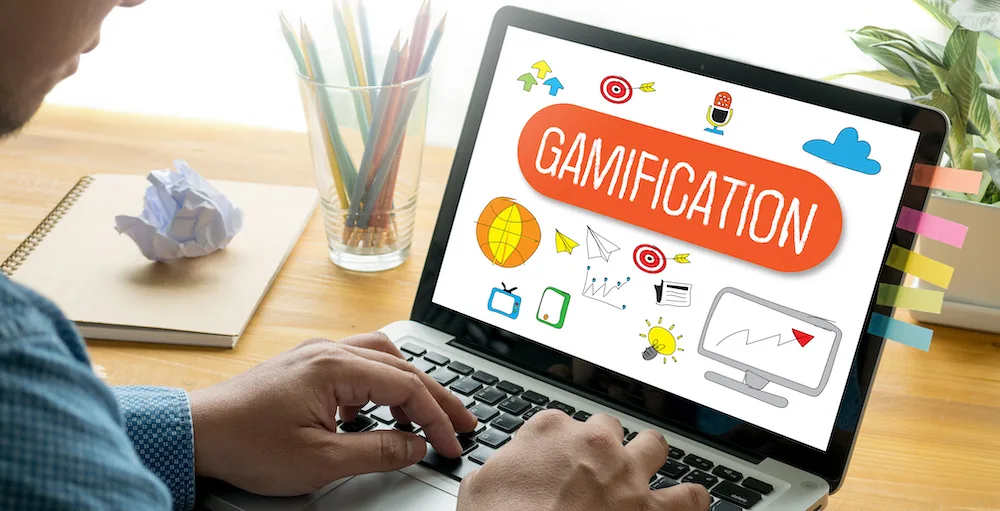It is clear to almost everyone in America that financial education in young people is sorely lacking.
Countless studies and surveys have demonstrated the need to fill that education gap.
Students generally can barely answer more than half of financial questions correctly on average.1
Related article: U.S. Financial Literacy Test Shows College Students Need Help
And the burgeoning student loan debt crisis only increases the direness of the situation.
Everyone knows we need to educate young people and students about money matters. But how best to do it?
A long seminar compound interest and APR vs. APY hardly sounds like it would attract a lot of teenagers. Any people who did attend would be distracted playing on their phones. So what are we to do?
The answer has just been mentioned: play.
To engage students in financial learning, incorporate elements of games into the curriculum. Gamification is key to any financial education initiative, helping to increase engagement, motivation, and learning.
All these concepts are important when creating a financial wellness and education program. Without them, the program is sure to fail.
The term “gamification” was first used in 2008 in a blog post by Bret Terril. But it was in 2010 when the concept began to take off. That is when the Gamification Research Network was established, and in 2011 the first Gamification Summit was held.2
Gamification is now used around the world. It is used in everything from education to worker recruitment.
By definition, it uses elements of gameplay in everyday life to increase engagement, learning, or other objectives.
In practice, gamification may look like different things. Learning environments often involve leaderboards, point systems, and badges. Badges are online certificates or awards that are given out for completing various tasks.
A study published in 2014 found that the use of badges can help with learning. The study looked at the lack of student motivation and dropout rates in a blended online/in-person university setting. The results showed that learning performance increased the more students engaged with interactive badges.3
Student motivation is also important when it comes to financial learning. Finances can often be an abstract concept that both stresses and confuses people. Creating the motivation to learn about these concepts is key to reducing the chasm of financial knowledge in young people.
In 2019, another study found that gamification can have a positive impact on three types of learning. Motivational learning outcomes are based on intrinsic motivation and engagement. Cognitive learning outcomes refer to knowledge gain. Behavioral learning outcomes are skills and competencies. The study found that gamification has a positive effect on all three.4
These three outcomes are key for financial education programs. Financial education is not just about knowledge gain but about learning how to use that knowledge effectively. Gamification helps a financial education program turn knowledge into behavior change.
Last year, most schools in the U.S. were shuttered due to the COVID-19 pandemic. That forced learning online for almost all students. That made the 2014 study mentioned above regarding student motivation much more important. Most students were not used to a 100% online learning situation.
Thankfully, gamification is to the rescue. One study on gamification was conducted during the COVID-19 pandemic and found that students thought gamification was innovative and engaging. They also found it effective for delivering the curriculum.5
Several studies have backed up the idea that gamification is an effective way to improve online learning.6
Leveraging that knowledge in a financial education program helps make it more effective. COVID-19 continues to impact students, making online learning a continuing presence. But it has not made the lack of financial education disappear.
Indeed, the effect of the pandemic has worsened the student loan crisis and other financial issues for many people which has lead to financial literacy becoming one of the most desired college student programs for 2021.
Gamification has been thoroughly researched as a tool for education and other objectives. Using it in a financial education program is key to the program’s success.
Money matters are difficult for many people to understand. This is shown through the poor scores on financial quizzes mentioned earlier.
Creating an engaging and effective way to understand those concepts is key to a successful financial education program.
Clearly, gamification is one of the top elements to use.
Related article: 65 Ways to Measure Success: College Financial Literacy Programs
1 - https://cssl.osu.edu/posts/632320bc-704d-4eef-8bcb-87c83019f2e9/documents/2020-scfw-key-findings-report-combined-accessible.pdf
2 - https://www.knolskape.com/brief-history-gamification/#.YUi1MJ1KjD4
3- https://www.semanticscholar.org/paper/Engaging-Students-in-Online-Courses-through-Badges-Tvarozek-Brza/fe685176c8d4bf7f6507f3870815f56a65097c89?p2df
4 - http://gamification-research.org/2019/08/does-gamification-of-learning-work/#more-1415
5 - https://www.frontiersin.org/articles/10.3389/fpsyg.2021.648552/full
6 - https://link.springer.com/chapter/10.1007/978-3-319-19773-9_82








